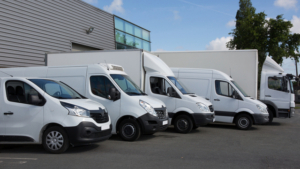Managing The Cost Of Fleet Insurance
24/02/2022
Motor fleet insurance is for companies with 2 or more vehicles allowing them to integrate them onto one policy which can be made up of multiple different vehicle types such as cars, Vans, Trucks, Lorries and other special types. It is a great way for businesses to manage their vehicle insurance as it reduces the administration of having multiple separate insurance policies for each vehicle.
Motor fleet insurance prices can vary drastically depending on several factors such as claims history, risk management and the vehicles involved. We are going to discuss 3 ways to manage your fleet to get the most competitive premiums.
Carry out regular assessments
In order to properly manage a fleet its crucial to regularly assess how it currently stands and the data. This is something your insurance broker should help you monitor at least on a yearly basis when your renewals are due. A good way to do this is to keep a claim listing that can be used alongside your claims experience that insurers generate. Within this you can record claims, where they occur, who was driving, how they occurred and their severity.
With this information you and your broker can use it to present an accurate picture to insurers when renewal is due and paint a better picture of how the fleet is performing. This will involve them giving detailed accounts of larger claims particularly if these are outliers. It also enables them to establish themes such as particular drivers ages or training that can be given to improve the fleet data.
Driver/Employee Training
Another great tool to manage fleet premiums is Driver Training. This form of risk management involves training in areas such as Healthy & Safety, Productivity, Operational costs and data analysis. All with the aim of improving how employees perform at work and in this case, operating their vehicles in turn bringing down your fuel and maintenance costs and lessening the likelihood of accidents.
If a fleet is distressed and insurance claims are rising, insurers will want to see that efforts are being made to turn this around and expect to see tactics such as training being employed in order to manage the risks. Driver Training doesn’t only have to be used for larger or more developed fleets either, as insurers will look favourably upon these methods even on new start up fleets.
Cameras
Cameras can be installed on the dashboard of fleet vehicles as well as rear and other angles if required. This can have several positive impacts on the fleet and in turn the price of insurance. Firstly, for drivers, simply knowing that their driving is being monitored at all times keeps them accountable and aware of how they drive, particularly if that footage is being used should an incident occur. Another positive effect of this enabling this footage to be monitored across the fleet and spot bad habits or areas that training can then help to improve.
Lastly and potentially most importantly in the eyes of an insurer, incidents being recorded enables better analysis of claims to ensure the correct outcome. This helps to mitigate false claims or over inflated ones even if the fleets driver is at fault.


